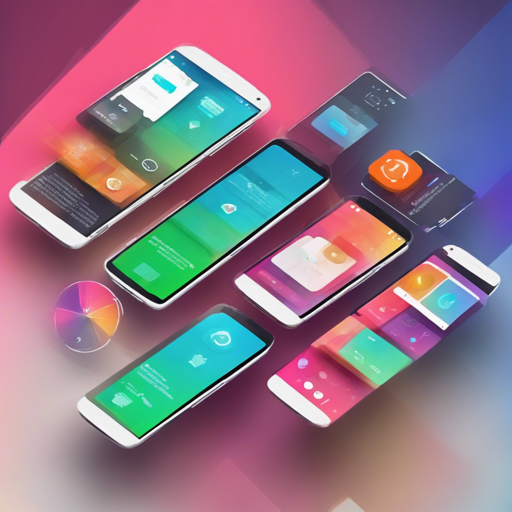Creating visually appealing applications often requires special effects, with blur effects being among the most sought-after. Thankfully, BlurKit simplifies the implementation process, making it both user-friendly and efficient. In this guide, we’ll embark on a journey to integrate BlurKit into your Android project, illustrating its usage along the way.
What Is BlurKit?
BlurKit is an extraordinarily easy-to-use and performant utility designed to render real-time blur effects specifically for Android applications. With its optimizations, it provides a superior experience compared to other blurring libraries.
Performance Comparison
One of the standout features of BlurKit is its remarkable performance. Below is a quick comparison showing how BlurKit outperforms other libraries:
- Retrieve source bitmap: 1-2 ms compared to 8-25 ms
- Blur and draw to BlurView: 1-2 ms compared to 10-50 ms
This results in an average workframe time of 2-4 ms, providing a seamless experience for users and applications.
Setting Up BlurKit
To get started, you first need to add BlurKit to your project’s dependencies. This is how you do it:
dependencies {
implementation 'io.alterac.blurkit:blurkit:1.1.0'
}Using BlurKit in Your Layout
To employ BlurKit, you must add a BlurLayout to your XML layout. Here’s how it’s done:
<io.alterac.blurkit.BlurLayout
android:id="@+id/blurLayout"
android:layout_width="150dp"
android:layout_height="150dp"/>Implementing Blur Functionality in Your Activity
Head over to your MainActivity.java. You will need to override the onStart() and onStop() methods to handle the BlurLayout functionality:
BlurLayout blurLayout;
@Override
protected void onCreate(Bundle savedInstanceState) {
super.onCreate(savedInstanceState);
setContentView(R.layout.activity_main);
blurLayout = findViewById(R.id.blurLayout);
}
@Override
protected void onStart() {
super.onStart();
blurLayout.startBlur();
}
@Override
protected void onStop() {
blurLayout.pauseBlur();
super.onStop();
}This code essentially creates a class where your BlurLayout starts its blurring process in the onStart() method and pauses it in onStop(). Think of this as switching on the sound in a cafe; when you enter (onStart), the ambiance is lively, and when you leave (onStop), the sounds quiet down.
Additional Configuration
If your background content is somewhat static, you can configure the layout’s frames per second (fps) to 0 to optimize performance. For instance:
<io.alterac.blurkit.BlurLayout
android:id="@+id/blurLayout"
android:layout_width="150dp"
android:layout_height="150dp"
blurkit:blk_fps="0"/>You can further customize parameters like blur radius and downscale factor. Experiment with these values to achieve your ideal blur effect:
<io.alterac.blurkit.BlurLayout
android:id="@+id/blurLayout"
android:layout_width="150dp"
android:layout_height="150dp"
blurkit:blk_blurRadius="12"
blurkit:blk_downscaleFactor="0.12"
blurkit:blk_fps="60"/>Using BlurKit Outside of a Layout
If you’re looking to use BlurKit outside of the conventional layout, you can utilize the BlurKit class directly. Be sure to initialize BlurKit in your application class:
public class MyApplication extends Application {
@Override
public void onCreate() {
BlurKit.init(this);
}
}Then, you can blur a specific View or a Bitmap:
ViewBlurKit.getInstance().blur(View src, int radius);
BitmapBlurKit.getInstance().blur(Bitmap src, int radius);
Upcoming Features
BlurKit developers are constantly improving the library, with exciting features on the horizon:
- SurfaceView support
- Support for use outside of an Activity
- Enhanced retrieval of background content to improve performance
Troubleshooting Tips
If you encounter any issues while implementing BlurKit, here are some troubleshooting ideas:
- Ensure you have the correct library version.
- Check that your layout properties are correctly defined.
- Look out for any configuration mismatches that might affect the blur effect.
For more insights, updates, or to collaborate on AI development projects, stay connected with fxis.ai.
Final Thoughts
At fxis.ai, we believe that such advancements are crucial for the future of AI, as they enable more comprehensive and effective solutions. Our team is continually exploring new methodologies to push the envelope in artificial intelligence, ensuring that our clients benefit from the latest technological innovations.

